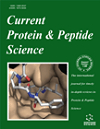
Full text loading...
We use cookies to track usage and preferences.I Understand
Alzheimer's disease (AD), the most common kind of dementia worldwide, is characterized by elevated levels of the amyloid-β (Aβ) peptide and hyperphosphorylated tau protein in the neurons. The complexity of AD makes the development of treatments infamously challenging. Apolipoprotein E (APOE) genes’s ɛ4 allele is one of the main genetic risk factors for AD. While the APOE gene's ɛ4 allele considerably increases the chance of developing AD, the ɛ2 allele is protective compared to the prevalent ɛ3 variant. It is fiercely discussed how APOE affects the development and course of disease since it has a variety of activities that influence both neuronal and non-neuronal cells. ApoE4 contributes to the formation of tau tangles, deposition of Aβ, neuroinflammation, and other processes. Four decades of research have provided a significant understanding of the structure of APOE and how this may affect the neuropathology and pathogenesis of AD. APOE is a crucial lipid transporter essential for the growth of the central nervous system (CNS), upkeep, and repair. The mechanisms by which APOE contributes to the pathophysiology of AD are still up for discussion, though. Evidence suggests that APOE affects the brain's clearance and deposition of Aβ. Additionally, APOE has Aβ-independent pathways in AD, which has led to the identification of new functions for APOE, including mitochondrial dysfunction. This study summarizes important studies that describe how APOE4 affects well-known AD pathologies, including tau pathology, Aβ, neuroinflammation, and dysfunction of neural networks. This study also envisions some of the therapeutic approaches being used to target APOE4 in the hopes of preventing or treating AD.

Article metrics loading...

Full text loading...
References


Data & Media loading...

